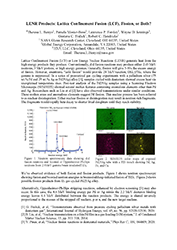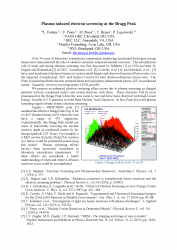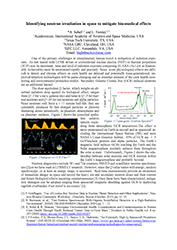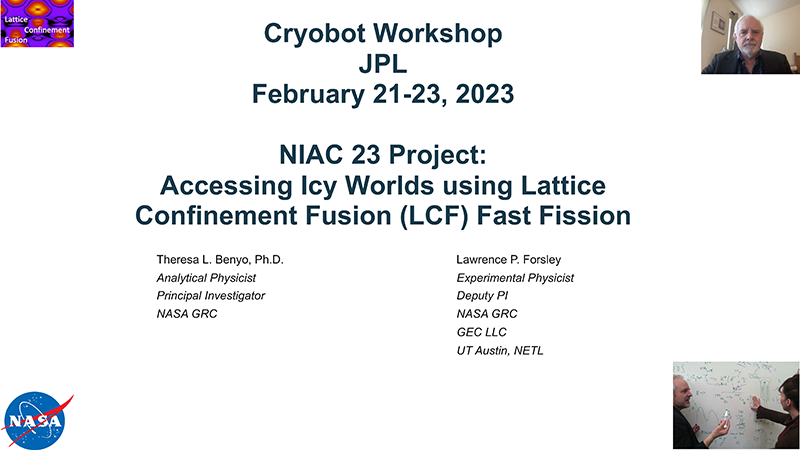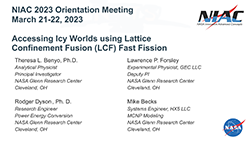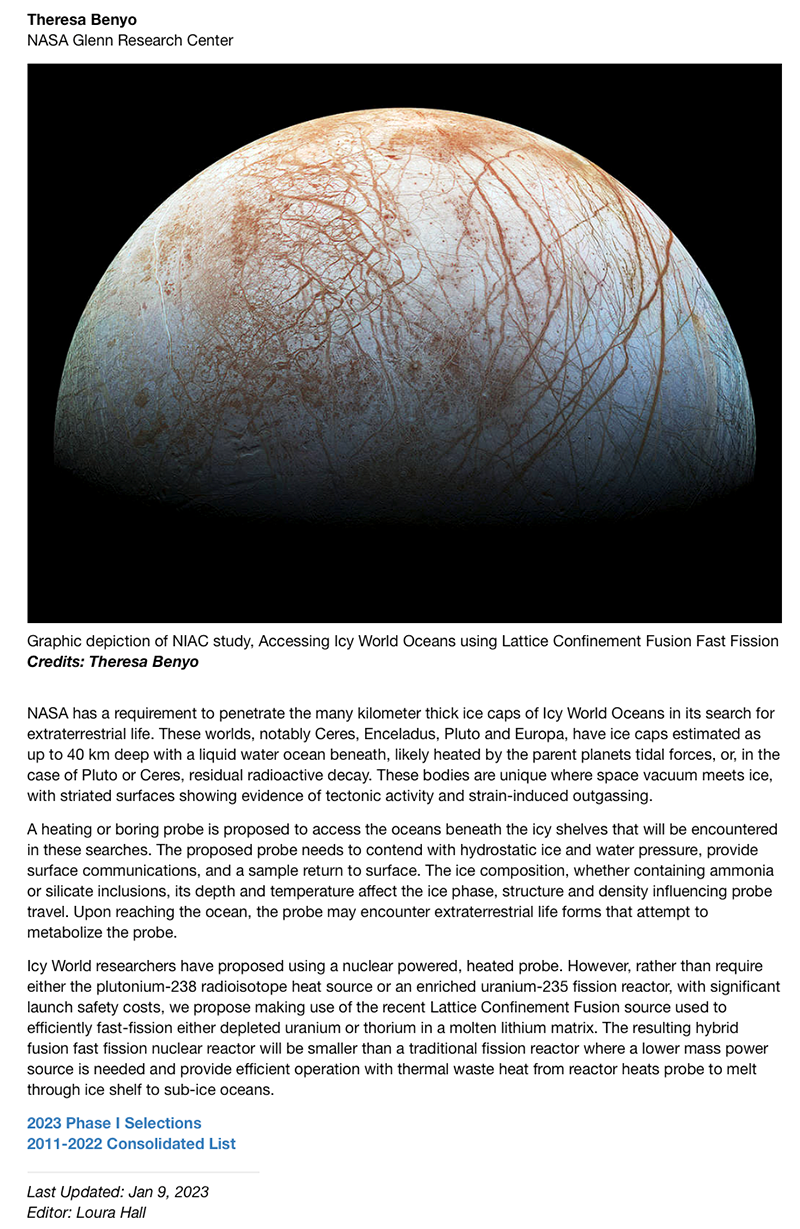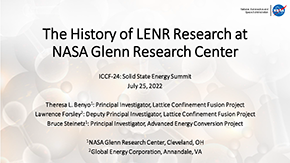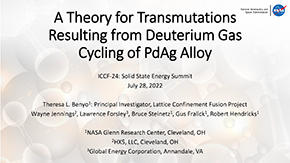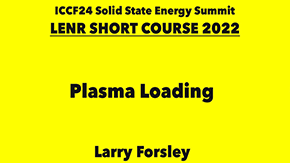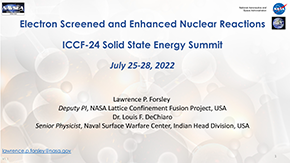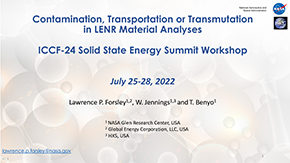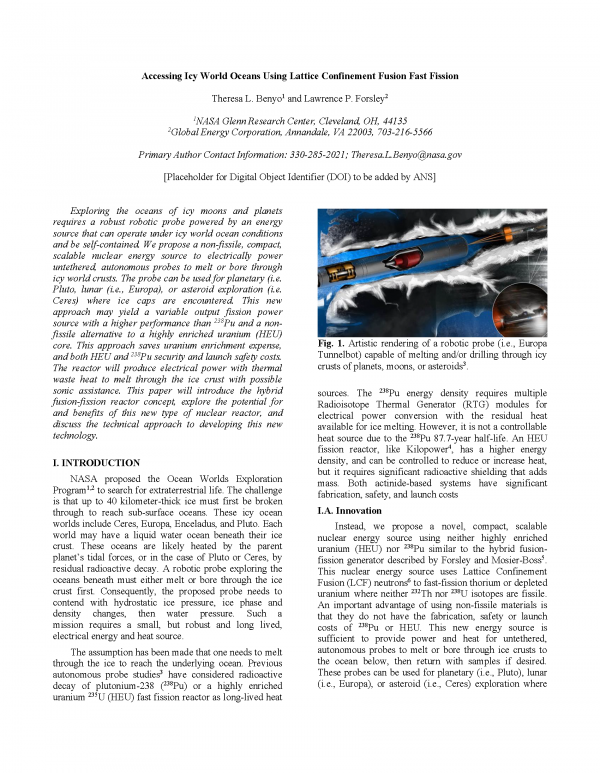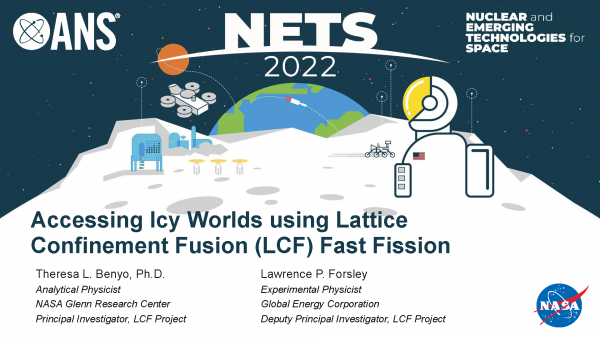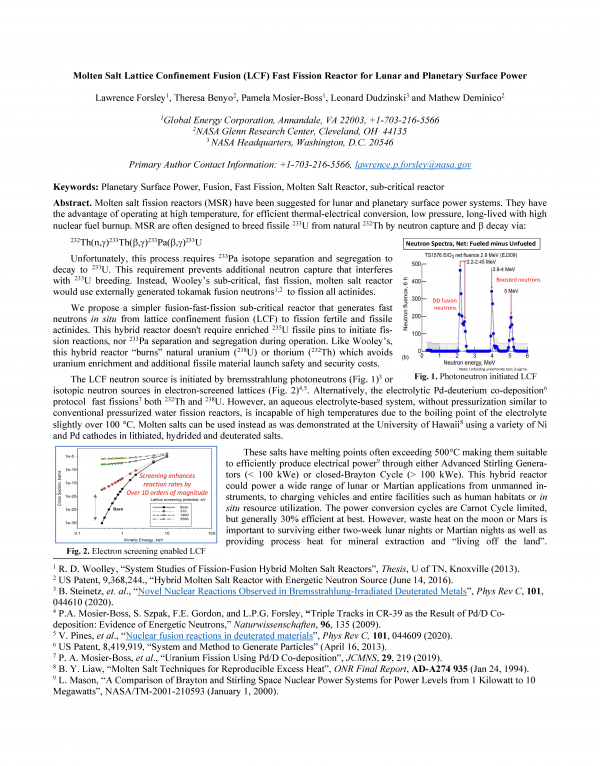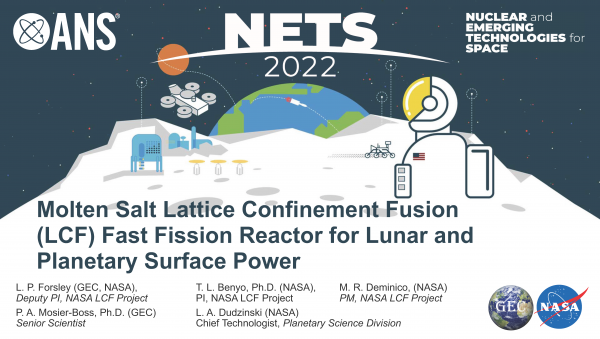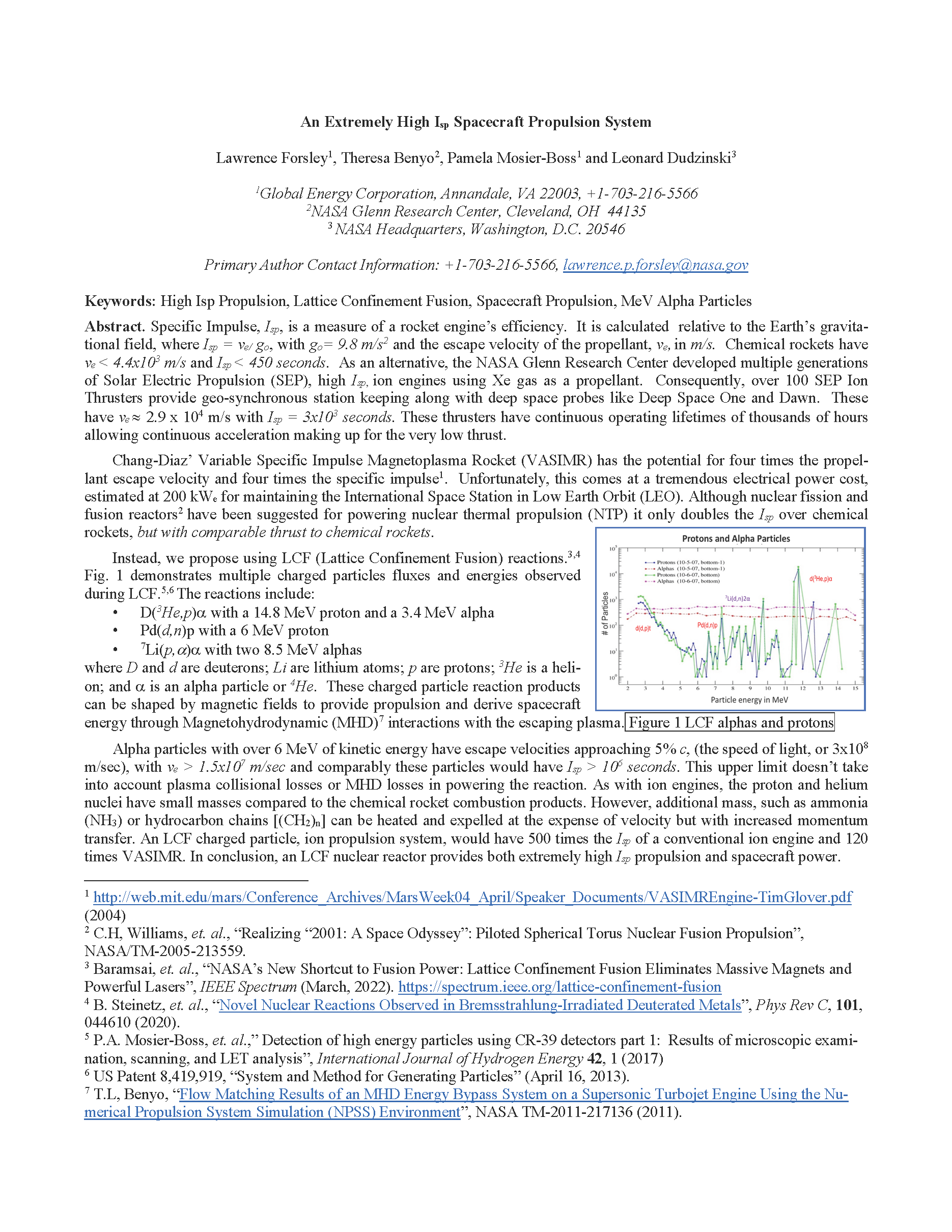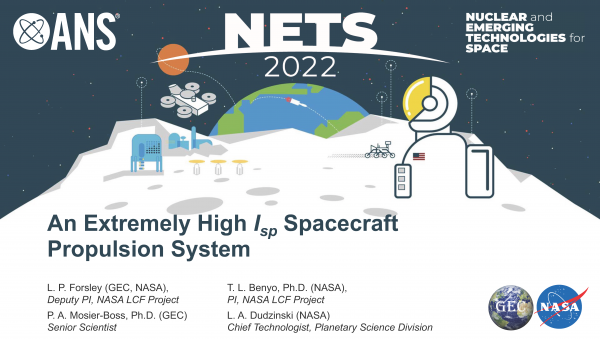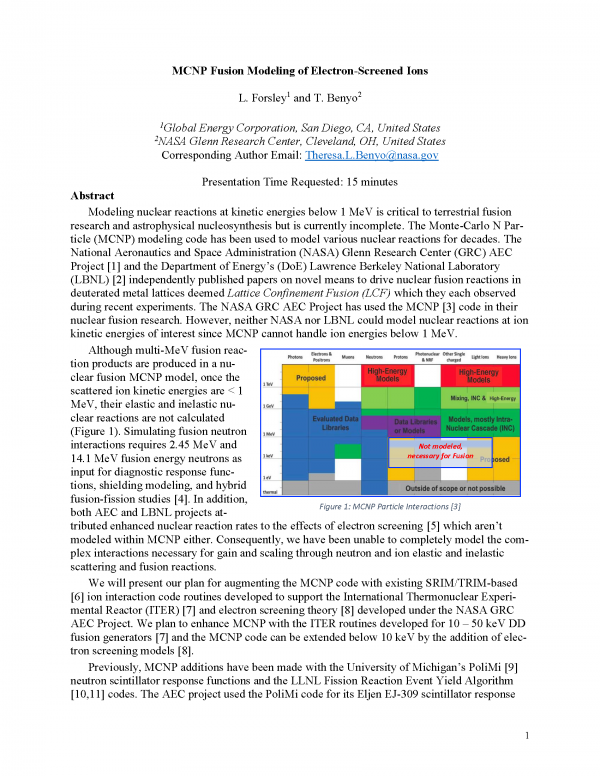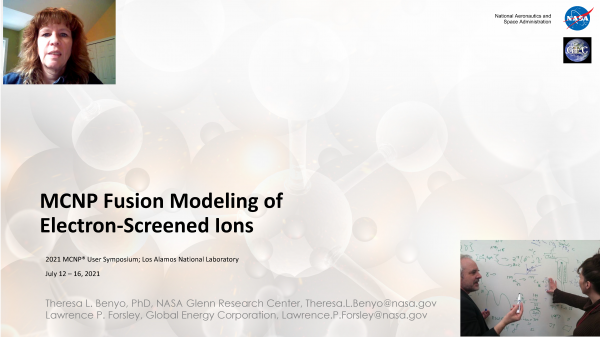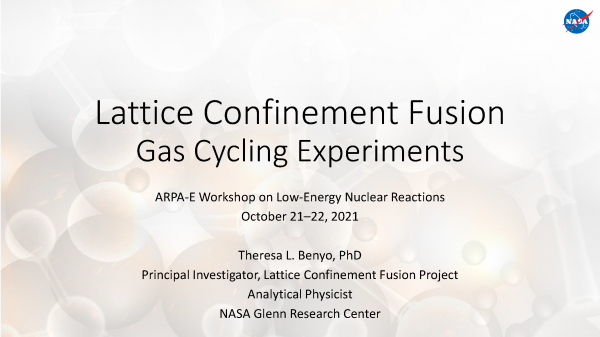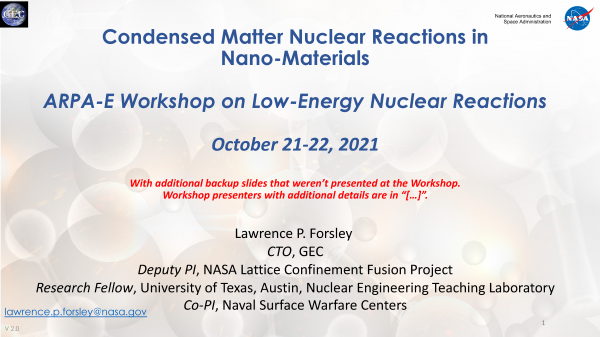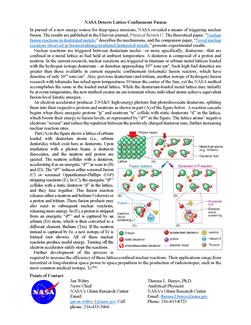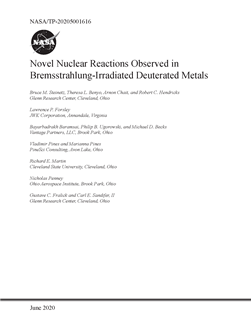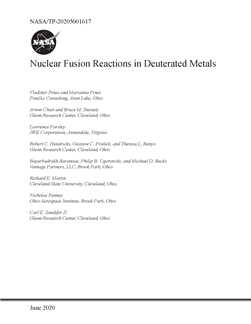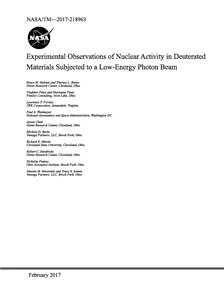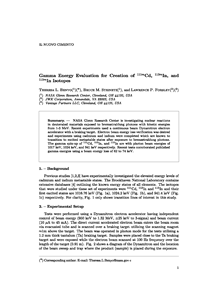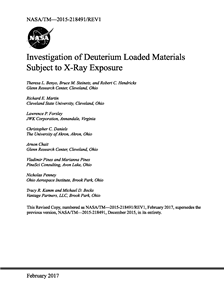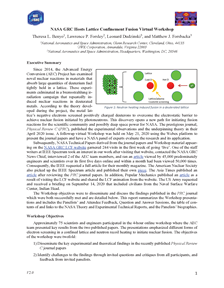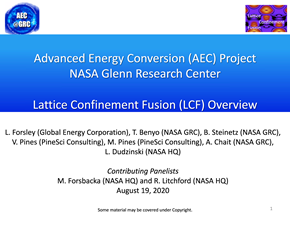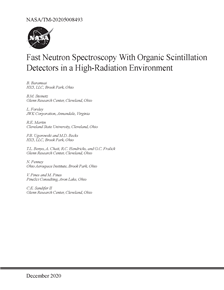Lattice Confinement Fusion
NASA Detects Lattice Confinement Fusion
A team of NASA researchers seeking a new energy source for deep-space exploration missions, recently revealed a method for triggering nuclear fusion in the space between the atoms of a metal solid.
Their research was published in two peer-reviewed papers in the top journal in the field, Physical Review C, Volume 101 (April, 2020): “Nuclear fusion reactions in deuterated metals” and “Novel nuclear reactions observed in bremsstrahlung-irradiated deuterated metals.”
Nuclear fusion is a process that produces energy when two nuclei join to form a heavier nucleus. “Scientists are interested in fusion, because it could generate enormous amounts of energy without creating long-lasting radioactive byproducts,” said Theresa Benyo, Ph.D., of NASA’s Glenn Research Center. “However, conventional fusion reactions are difficult to achieve and sustain because they rely on temperatures so extreme to overcome the strong electrostatic repulsion between positively charged nuclei that the process has been impractical.”
Called Lattice Confinement Fusion, the method NASA revealed accomplishes fusion reactions with the fuel (deuterium, a widely available non-radioactive hydrogen isotope composed of a proton, neutron, and electron, and denoted “D”) confined in the space between the atoms of a metal solid. In previous fusion research such as inertial confinement fusion, fuel (such as deuterium/tritium) is compressed to extremely high levels but for only a short, nano-second period of time, when fusion can occur. In magnetic confinement fusion, the fuel is heated in a plasma to temperatures much higher than those at the center of the Sun. In the new method, conditions sufficient for fusion are created in the confines of the metal lattice that is held at ambient temperature. While the metal lattice, loaded with deuterium fuel, may initially appear to be at room temperature, the new method creates an energetic environment inside the lattice where individual atoms achieve equivalent fusion-level kinetic energies.
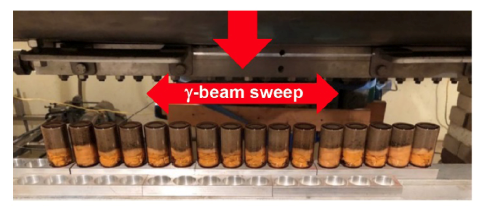
A metal such as erbium is “deuterated” or loaded with deuterium atoms, “deuterons,” packing the fuel a billion times denser than in magnetic confinement (tokamak) fusion reactors. In the new method, a neutron source “heats” or accelerates deuterons sufficiently such that when colliding with a neighboring deuteron it causes D-D fusion reactions. In the current experiments, the neutrons were created through photodissociation of deuterons via exposure to 2.9+MeV gamma (energetic X-ray) beam. Upon irradiation, some of the fuel deuterons dissociate resulting in both the needed energetic neutrons and protons. In addition to measuring fusion reaction neutrons, the Glenn Team also observed the production of even more energetic neutrons which is evidence of boosted fusion reactions or screened Oppenheimer-Phillips (O-P) nuclear stripping reactions with the metal lattice atoms. Either reaction opens a path to process scaling.
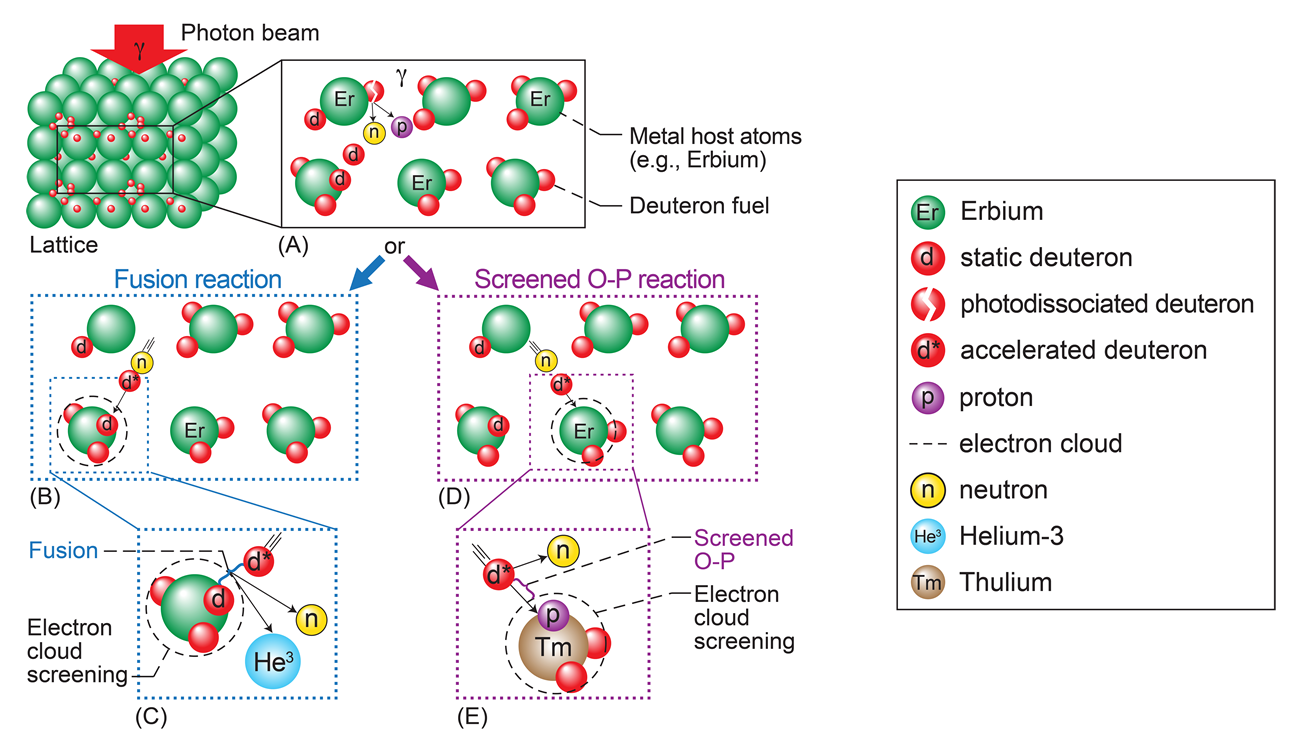
A novel feature of the new process is the critical role played by metal lattice electrons whose negative charges help “screen” the positively charged deuterons. Such screening allows adjacent fuel nuclei to approach one another more closely, reducing the chance they simply scatter off one another, and increasing the likelihood that they tunnel through the electrostatic barrier promoting fusion. This is according to the theory developed by the project’s theoretical physicist, Vladimir Pines, Ph.D, of PineSci.
“The current findings open a new path for initiating fusion reactions for further study within the scientific community. However, the reaction rates need to be increased substantially to achieve appreciable power levels, which may be possible utilizing various reaction multiplication methods under consideration,” said Glenn’s Bruce Steinetz, Ph.D., the NASA project principal investigator.
“The key to this discovery has been the talented, multi-disciplinary team that NASA Glenn assembled to investigate temperature anomalies and material transmutations that had been observed with highly deuterated metals,” said Leonard Dudzinski, Chief Technologist for Planetary Science, who supported the research. “We will need that approach to solve significant engineering challenges before a practical application can be designed.”
With more study and development, future applications could include power systems for long-duration space exploration missions or in-space propulsion. It also could be used on Earth for electrical power or creating medical isotopes for nuclear medicine.

LCF ICCF25 Presentation


ICCF24 Solid State Energy Summit Conference
Conference presentation videos are available at:
https://www.youtube.com/playlist?list=UUY5ZAbIS5LNSlAM001veh9w
GRC presentations and videos:
Additional Poster Sessions:
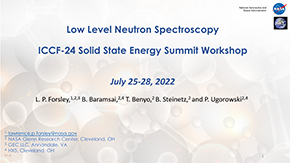 |

American Nuclear Society, Nuclear and Emerging Technologies for Space (NETS-22)


Publications
Images
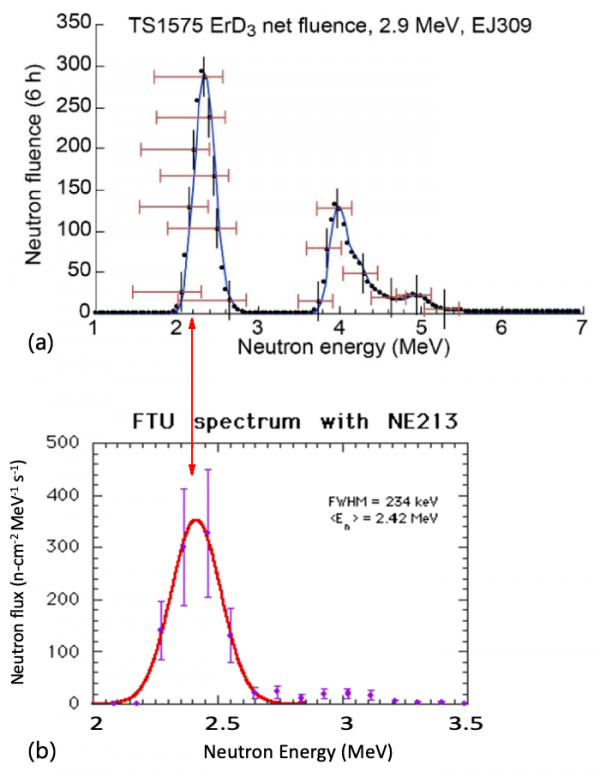
Videos
The GRC Team’s LCF Journey
Nuclear Fusion Reactions in Deuterated Metals

